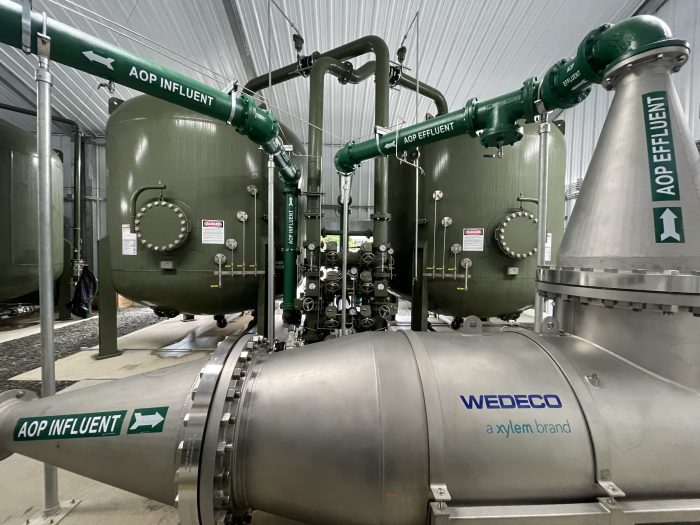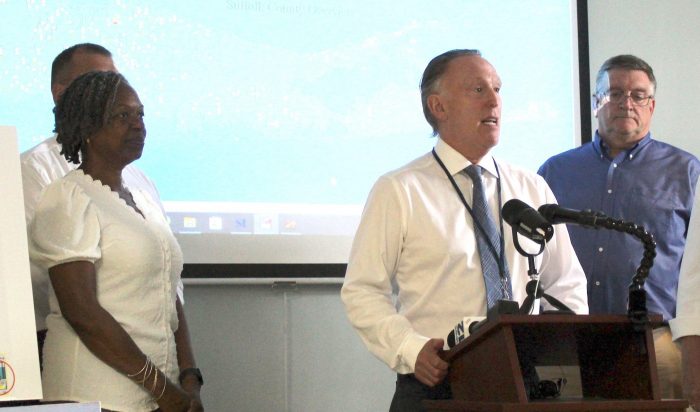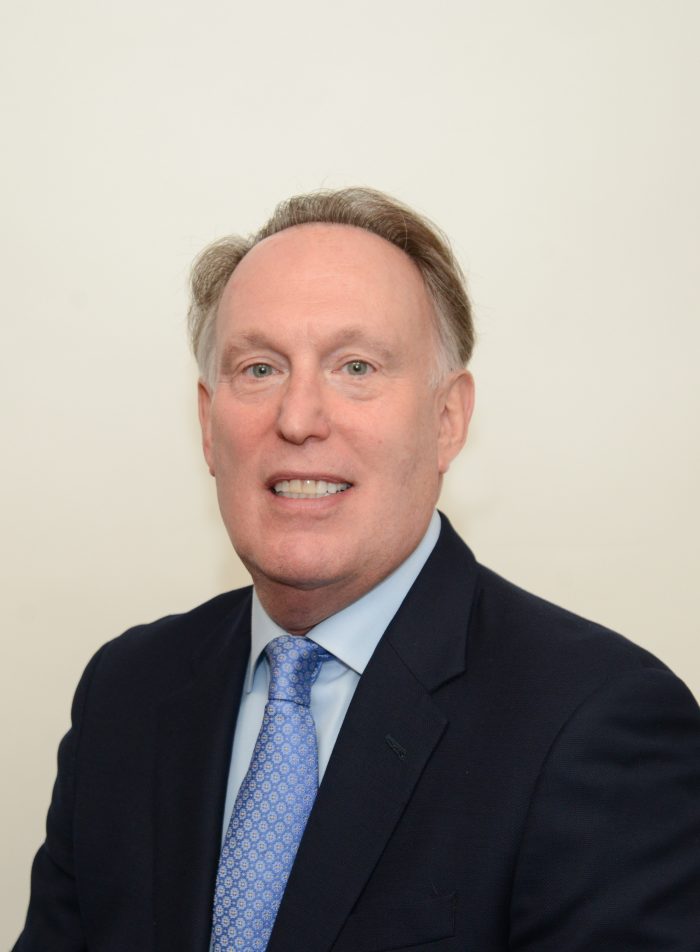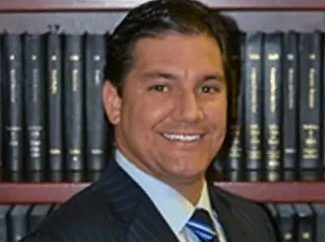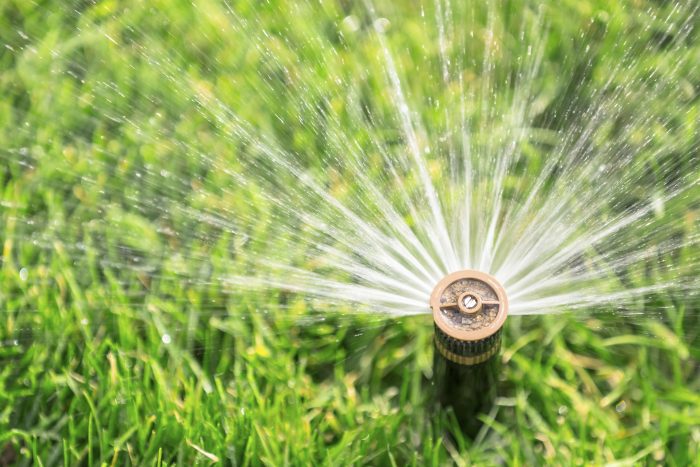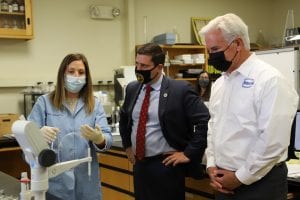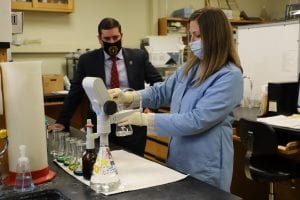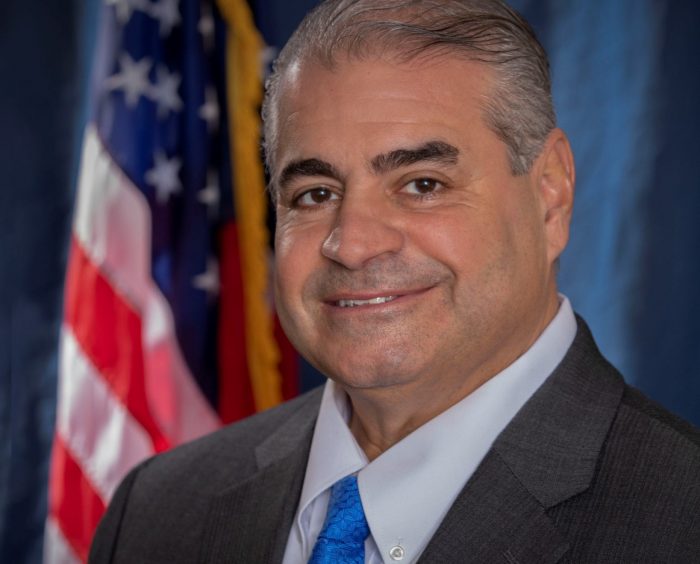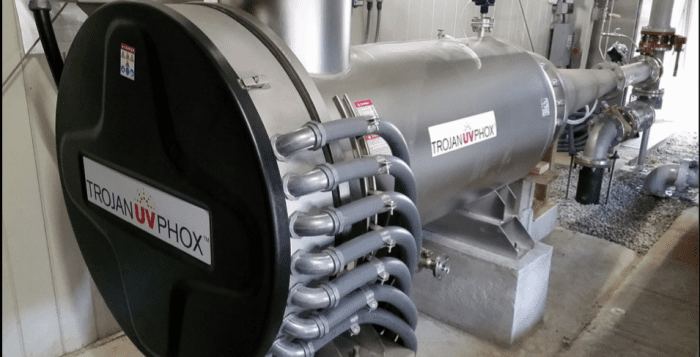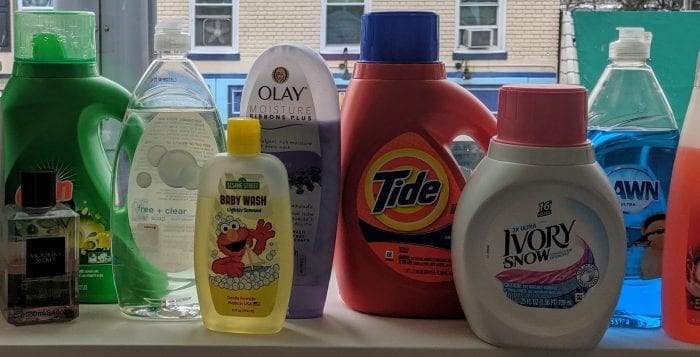By Raymond Janis
In a secluded residential block on Northport’s McKinney Avenue lies an advanced water treatment center masquerading as a barn.
At this site, representatives from the Suffolk County Water Authority joined state and local public officials for a press event on Thursday, Aug. 24, announcing eight new high-tech water filtration systems for local drinking water.
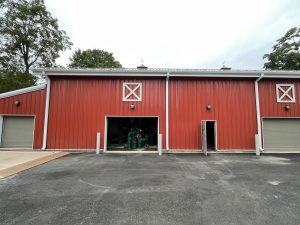
Charlie Lefkowitz, chairman of the SCWA Board, said the eight systems employ Advanced Oxidation Process, or AOP, technologies capable of treating and removing emerging contaminants — such as 1,4-dioxane — from the groundwater.
“I’m always asked by the media what is our biggest threat,” he said. “Aging infrastructure and emerging contaminants,” both of which are areas addressed through the AOP systems.
The SCWA Board chairman also noted the measures taken to comport this industrial complex with the surrounding area.
“Just look at the historical character of this building,” Lefkowitz said. “It doesn’t look like your normal commercial building throughout Suffolk County.”
He added, “This is a great moment for water treatment overall, for the Huntington community as well as every resident of Suffolk County.”
New York State Sen. Mario Mattera (R-St. James), who has previously served on the SCWA Board, emphasized the continual need to invest in and develop aging water treatment systems.
He pointed to the recently passed $4.2 billion New York State Environmental Bond Act [see page A12] as a potential funding source to keep this infrastructure up to date.
“We want to make sure that we received our fair share,” the state senator said. “Clean air, clean water and green jobs — that is so important that we receive the money.”
New York State Assemblyman Steve Stern (D-Dix Hills) also attended the event. He detailed the lifespan of the process from its planning stages to its completion.
“It’s very special when you get to see something that goes from some blueprints and some pipes to a plan and watching it through the policy effort to ultimately being able to make it happen and cut the ribbon,” Stern said.
Town of Huntington Supervisor Ed Smyth (R) tied the announcement to an ongoing local initiative to modernize infrastructure.
“Whether it’s on the highways, the roads or the waterfront, it’s all about infrastructure and maintenance, and I know everybody in the town is pulling in the same direction,” he said. “All you have to do is look around at this state-of-the-art facility to know that this money is well spent.”
Adrienne Esposito, executive director of Citizens Campaign for the Environment, highlighted the various threats against Long Island’s sole-source aquifer, referring to the new treatment center as “a needful clean water victory for the public.”
“1,4-dioxane is a highly toxic chemical,” she noted. “Having Suffolk County Water Authority be an aggressive partner to make sure they’re filtering that water for Suffolk residents is a pleasure, and it’s a gift.”
Despite the eight new treatment systems in Huntington, Lefkowitz suggested the work of SCWA to be “far from done.”
He indicated that the water authority is simultaneously completing nine other AOP systems throughout the county, with hopes to bring these online soon.

